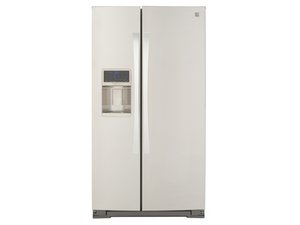Tough one. You looked at the top three causes. Here are others that will cause it not to cool:
Cause 1
Start Relay
The start relay works in conjunction with the start winding to start the compressor. If the start relay is defective, the compressor may sometimes fail to run or may not run at all. As a result, the refrigerator will not be cold enough. To determine if the start relay is defective, use a multimeter to test it for continuity between the run and start terminal sockets. If the start relay does not have continuity between the run and start terminal sockets, replace it. In addition, if the start relay has a burnt odor, replace it.
Cause 2
Temperature Control Thermostat
The temperature control thermostat directs voltage to the compressor, evaporator fan motor, and condenser fan motor (if applicable). If the temperature control thermostat is not working properly, it may prevent the refrigerant system from running. To determine if the thermostat is defective, rotate the thermostat from the lowest setting to the highest setting and listen for a click. If the thermostat clicks, it is not likely defective. If the thermostat does not click, use a multimeter to test the thermostat for continuity. If the temperature control thermostat does not have continuity at any setting, replace it.
Cause 3
Temperature Control Board
The temperature control board provides voltage to the compressor and fan motors. If the temperature control board is defective, it will stop sending voltage to the cooling system. However, this is not a common occurrence. Control boards are often misdiagnosed—before replacing the control board, first test all of the more commonly defective components. If none of the other components are defective, consider replacing the temperature control board.
Cause 4
Start Capacitor
The start capacitor provides a boost of power to the compressor during start-up. If the start capacitor isn’t working, the compressor may not start. As a result, the refrigerator will not cool. To determine if the start capacitor is defective, test it with a multimeter. If the start capacitor is defective, replace it.
Cause 5
Thermistor
The thermistor monitors the refrigerator temperature and sends the temperature reading to the control board. The control board regulates power to the compressor and evaporator fan based on the thermistor readings. If the thermistor is defective, the compressor and evaporator fan may not run when necessary. As a result, the refrigerator will not be cold enough. To determine if the thermistor is defective, test it with a multimeter. The thermistor resistance should change in conjunction with the refrigerator temperature. If the thermistor resistance does not change, or the thermistor does not have continuity, replace the thermistor.
Cause 6
Compressor
The compressor is a pump which compresses the refrigerant and circulates the refrigerant through the evaporator and condenser coils. If the compressor is not working, the refrigerator won’t cool. However, this is rarely the case. Before replacing the compressor, first check all of the more commonly defective parts. If you have determined that all of the other components are working properly, check the compressor. Use a multimeter to test the continuity between the electrical pins on the side of the compressor. If there is an open circuit, the compressor is likely defective. If the compressor is defective, it must be replaced by a licensed technician.
Cause 7
Main Control Board
The main control board might be defective. However, this is almost never the cause. Before replacing the main control board, test all of more commonly defective parts. If none of the other components are defective, consider replacing the main control board.
Cette réponse est-elle utile ?
A voté
Annuler
Indice
2
Annuler
Faites défiler ce fil pour trouver l'endroit approprié pour y placer ce commentaire. Cliquez ensuite sur « Ajouter un commentaire à cette contribution » pour le déplacer.

 2
2  2
2 
 2,6k
2,6k
1 commentaire
The evaporator fan in the freezer is running. The condenser fan is running. The compressor is humming and does not feel hot when touched. I have adjusted the freezer and refrigerator temperatures to -1 and 37.
soursce :
https://samsung-repair.company/
par kiriazysales